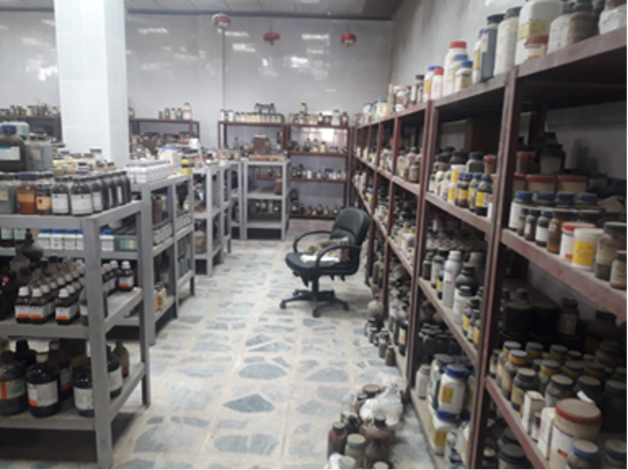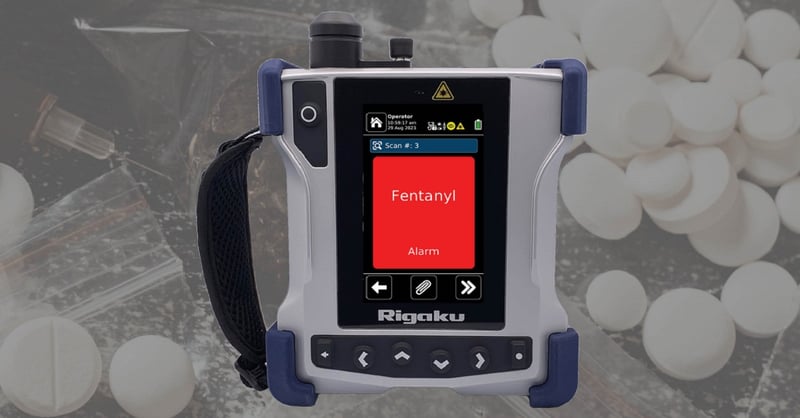Case Study:
On-Site Presumptive Identification in Post-ISIS Occupied Territories
The U.S. Department of Defense (DoD) commissioned a Chemical, Biological, Radiological, and Nuclear (CBRN) team to focus on a post-conflict mission conducting toxic chemical surveys. The mission’s focus was to remove and secure weaponized systems left in post-ISIS occupied territories by targeting academic, medical, and industrial sources of toxic and dual-purpose chemicals. This project contributes to the U.S. government’s non-proliferation campaign to remove and secure sources from theft and nefarious use, and before families and businesses repopulate recently liberated territories.

Operation Description
This mission involved two urgent requirements to immediately deploy CBRN expertise and demining teams to develop force protection techniques in the event an Explosive Ordnance Disposal (EOD) operation unexpectedly came in contact with toxic chemicals. The second task called for toxic chemical surveys in former ISIS occupied territories to allow for remediation and the return of businesses and families to the area.
The survey program focus was on university chemical laboratories within the greater Mosul, Iraq area. ISIS first occupied Mosul and the surrounding area in 2015 and the last remnants were displaced in January 2018. With over 420 university laboratories under ISIS control for years, the survey task took a much longer operational timeline than planned. To date, the team has surveyed about 42 laboratories with most in the same deplorable condition. It appears ISIS used consolidated chemical storage facilities as a source to contaminate the terrain.
Containers of corrosive and flammable chemicals were dispersed in classrooms, pooled in laboratories, and thrown outside to disrupt the repopulation and reuse of the facility. In addition, ISIS attempted to set fire to the first story of high-rise department buildings. This resulted in damaging equipment and facilities left behind. Most laboratory equipment was either pilfered or destroyed. Once academic institutions of excellence, were now damaged requiring significant repair seeded with IEDs.

Mission Goals
- Deploy CBRN experts with identification equipment to conduct reconnaissance, surveying, and clearance of critical infrastructure
- All chemicals detected with equipment will be evaluated and catalogued
- Produce site-specific photographic and written reports of chemicals
- Advise on intervention measures of hazardous chemicals

Presumptive ID without the Field Lab
The team of CBRN experts deployed to manage the more complicated surveys expected in the industrial and medical sites with a set of detection equipment - including a Rigaku handheld Raman analyzer. The technical survey follows the results of a “confirm / deny” survey. This requires complete accountability and inventory for all chemicals. 100% sampling and presumptive identification inventory along with the facility size and diagram are developed and reported. The final report includes all of the technical information required to determine the best method to achieve remediation or safe and secure disposal. In both cases, the Rigaku unite was a critical component of the team’s capability. With results available in less than 2 minutes on the tailgate of a support vehicle, it negates the need for a chain of custody, accountability, field laboratory backlogs, and misrouted results.
The team developed a technique unique to the original design of most handheld analyzers. Instead of capturing the liquid in a vial, the team would swipe liquids, solids, and powders, then double bag the sample and present it to the Rigaku instrument. This allows for a more efficient sampling process and prevents contaminating the instrument and needing to decon.

Survey Observations
Pharmacy Plant
The team was advised to visit a pharmacy plant north of Mosul that was recently liberated. This was once a government-owned facility to receive bulk supplies and repackage for individual distribution of everything from lip balm to aspirin, but was now vacant and unsecured with an inventory of dual-purpose chemicals. Notable among the inventory was approximately 92,000 gallons of glycerin, an explosive precursor, identified with the Rigaku ResQ. It took several revisits to accurately estimate the volume of chemicals.
Mosul International Airport
During the process of excavation, a dark agent was discovered near the approximate location of a rocket warhead. Work ceased until a chemical survey could be completed, as there was concern of possible exposure to mustard agent. Once the CBRN chemical team arrived, they were able to identify the substance as ammonium nitrate with the Rigaku Raman analyzer, in less than 5 minutes. This saved a couple of hundred thousand dollars in ensuring the operation was back up and running in minutes, without the need for further chemical analysis equipment or off-site support.
Operation Conclusion
Once a mission space monopolized by defense forces, private industry is capable of augmenting military surveys in a post-conflict semi-permissive environment. When armed forces are concerned with mobility and weaponized threats, private industry can now survey industrial-academic-medical activities to provide greater fidelity on the non-kinetic threat overlay.
Recommended Products
Rigaku's CQL Series of handheld 1064 nm Raman analyzers are fit for purpose for your department's analysis needs and budget.

CQL Narc-ID
Presumptive identification of narcotics, precursor chemicals, and cutting agents.
Is the CQL Narc-ID Right for Me? >
CQL Gen-ID
Expands chemical threat analysis with a library that also includes more general threats, including explosives and general chemicals.
Is the CQL Gen-ID right for me? >
CQL Max-ID
Maximizes chemical threat analysis, with the largest on-board library to identify over 13,000 items including narcotics, explosives, toxic chemical industrial chemicals, chemical warfare agents (CWAs), and more.
Is the CQL Max-ID right for me? >
Contact Us
Whether you're interested in getting a quote, want a demo, need technical support, or simply have a question, we're here to help.
